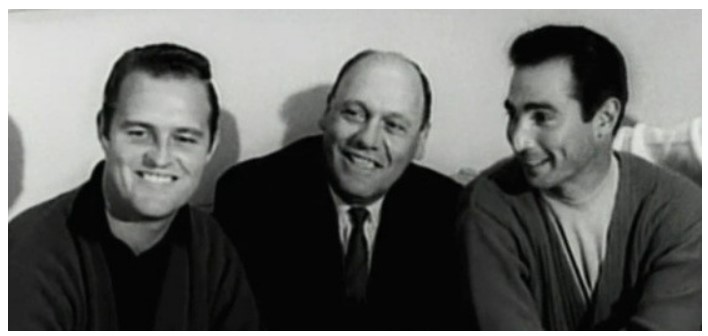
As a youngster I had, for the most part, been taught the notion that baseball was as American as apple pie, and that their owners and management were as pure as the driven snow. As a result, I did not pay much attention to the business aspect of baseball, nor did I give much thought to the relationship between the owners and players. Certainly, they would always do the right thing. This was the game of baseball after all.
Then, in 1966, the Dodgers’ 2 best pitchers, Sandy Koufax and Don Drysdale did not report to Spring Training, choosing instead to hold out as a means of negotiating a better contract. In 1965, Koufax had won 26 games and his second Cy Young Award in three years. He finished second to Willie Mays for the National League most-valuable-player award. The Dodgers paid Koufax $85,000 that season. They paid $80,000 to Drysdale, who had won 23 games, batted .300 with seven home runs, and finished fifth in the MVP race.
For 1966, the Dodgers offered $100,000 to Koufax and $85,000 to Drysdale. By way of comparison, the San Francisco Giants had signed Mays for two years, at about $125,000 per year. Koufax and Drysdale, apparently tired of the Dodgers’ playing one against the other, teamed up and asked the Dodgers for three years at a total of $1 million to be split equally between them, so each would earn $167,000 per year. All of a sudden, these pitching icons, certainly the best pitchers on the defending World Series champions and my heroes, were widely viewed as heretics in the context of their time. There was no free agency, no salary arbitration, and no power in the players’ union. If a player did not like the salary offered by management, he could stay home. So Koufax and Drysdale did, threatening by their absence to turn the Dodgers from the best team in the National League into an also-ran. Koufax and Drysdale had effectively became baseball’s first union, a union of two. The holdout was ultimately resolved, Koufax and Drysdale got raises (albeit, not what they asked for), and peace was restored.
Now, I will admit to not being a “union man,” however, with that said, my 15 year old self, just couldn’t fathom why the Dodgers would not pay Koufax and Drysdale what they were worth, knowing that without them, the team would be mere also-rans. Moreover, I didn’t understand why there was such a large public outcry against them. As Koufax wrote in his autobiography:
“It was astonishing to me, to learn that there were a remarkably large number of American citizens who truly did not believe we had the moral right to quit rather than work at a salary we felt — rightly or wrongly — to be less than we deserved. . . . Just take what the nice man wants to give you, get into your uniform, and go a fast 25 laps around the field.”
Over the years I began to wonder what it was about baseball that helped create situations like this. I came to learn that it was primarily due to MLB’s exemption from the federal antitrust laws and owner’s crowning jewel in that exemption, the reserve clause. In this article, and perhaps one or two to follow, I want to look at the history of the reserve clause and how the anti-trust exemption was applied to baseball by the courts. Forgive me if some of this sounds akin to a legal brief, it is unfortunately, the only way I know how to write. I also want to apologize to Jeff, I had promised him this article several weeks ago, but my personal life, work and then some new information that came to light on the subject, kept this from coming to fruition before now. My intentions were good, my execution was horrible. Also, to keep the readers somewhat interested, I will also throw in a Juan Soto or Shohei Ohtani trade proposal every couple of paragraphs or so.
In 1890, Congress enacted the Sherman Act. It was designed to prevent industrial monopolies from using their market power to disrupt and influence the national economy. Section 1 of the Act forbids contracts, combinations, and conspiracies that restrain trade. Section 2 prohibits monopolization as well as attempts and conspiracies to monopolize. While Congress intended that the antitrust laws would preserve free-market competition, the Act in fact outlaws only agreements or trade practices that unreasonably restrain trade and competition.
Baseball’s antitrust exemption originated in 1922 when the Supreme Court held that professional baseball exhibitions did not constitute interstate commerce, thereby placing the sport outside the federal antitrust laws. (Federal Baseball Club, Inc. v. National League of Prof’l Baseball Clubs, 259 U.S. 200, 208-09, 1922) In these articles, I want to trace the history of the battles in the courts and legislature concerning the battle between players, owners and rival leagues concerning the reserve clause and how MLB’s antitrust exemption came into being and how it is being challenged today. I have borrowed from many different sources for these articles and have tried to attribute the source as I go along. For anyone that wants to research this on their own, in greater depth, I highly recommend a very readable book on baseball’s history with the legal system, written by Professor Stuart Banner called “The Baseball Trust: A History of Baseball’s Antitrust Exemption.”
From the earliest days of professional baseball in the 1870s until the creation of free agency in the 1970s, the reserve clause was a subject of controversy and tension between players and management. “The clause, first implemented by the National League in 1879, provided in essence that a team was entitled to reserve the services of a player in perpetuity. At the time, most National League teams were losing money and faced bleak financial prospects. To curb expenses, the teams agreed on a strategy to keep salaries down: each team would be allowed to “reserve” up to five players for the following season. This meant that no other team could sign a reserved player unless he received permission to do so. When a player’s contract expired, the team for which he played had the exclusive right to negotiate with him for a new contract. The player had little bargaining power, for his only alternative to reaching agreement with his team was not to play. The team to which the player was bound could also trade him or sell his contract to another team without his consent. By forbidding the voluntary movement of players to other teams, the reserve clause kept salaries artificially low and gave players no say over where they performed their work.”1
The owners justified the reserve clause on the dubious grounds that without it, the wealthiest teams would sign all the best players, destroying competitive balance and ruining the sport. As expected, each team elected to reserve their five best players, i.e., their most expensive players. With no market competing for players’ services, team owners were able to suppress salaries for elite talent and increase profits. Indeed, just two seasons after the adoptions of the reserve clause, most teams had become profitable, the first time that had happened.
Because of the success of the reserve clause, the owners thought, what the heck, let’s apply it to our entire roster. Thus, in 1987, the reserve clause appeared explicitly in player contracts and permitted a team to reserve its entire roster, then consisting of fourteen players. This clause has been described as follows:
“A singular part of the contract between the baseball clubs and their employees was the reserve clause. It gave the club an exclusive and perpetual option on the player’s services. Furthermore, every club in Organized Baseball agreed not to employ or try to employ any player reserved by any other club. They also agreed not to play any team that employed a player who had broken the reserve clause, or even to allow their ball parks to be used by such a team. Their agreement not to compete with each other for players enabled the employers to exercise monopoly control, that is, a buyer’s monopoly, over their men.”2
Initially, the reserve clause didn’t come under much attack, because the National League was the “only game in town” and all of its owners agreed to the clause. A rival American Association appeared on the scene from 1882 to 1891, but friction with them was avoided with an 1883 “National Agreement” that prohibited the poaching of players subject to the reserve clause in either league. From the player’s perspective, their contracts were decidedly one sided. Although teams effectively controlled a player for the entirety of his career, nothing bound the teams to their players, except for their contracts (and virtually all contracts had one-year terms). Any player could be traded or sold at any time, and they could be released on just 10-days’ notice.
John Montgomery Ward became an important early figure in challenges to baseball’s reserve clause. Known as Monte Ward, he not only had a pretty epic baseball card, he was a star player. Playing for the Providence Grays, in 1879, he went 47–19 with 239 strikeouts and a 2.15 ERA, pitching 587 innings. The following season Ward went 39–24 with 230 strikeouts and a 1.74 ERA pitching 595.0 innings. Ward also has the distinction of pitching the second perfect game in professional history as well as the longest complete game shutout, going 18 innings in a 1-0 win over the Detroit Wolverines 1–0 on August 17, 1882, a record that will never be broken.
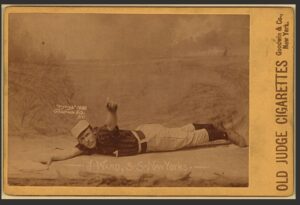
In 1983, he suffered an arm injury (not related to his pitching load), and was then sold to the New York Gothams (later the Giants . . . boo). Among other things, this sale placed Ward close to Columbia Law School, where he enrolled and graduated in 1885. Using his legal training, Ward organized and led the first labor union in professional sports, the Brotherhood of Professional Baseball Players. The principal goal of the Brotherhood was to raise player salaries, which had remained stagnant even though baseball’s popularity (and revenues) had risen considerably. A chief target of the Brotherhood’s effort was the reserve clause, which continued to suppress players’ salaries and limit their mobility. In 1890, the Brotherhood announced plans to start their own league, the Players League which included a profit-sharing plan for the players and, importantly, no reserve clause in the contracts. Many of the National League’s top players announced their intention to sign with Players’ League team, despite the reserve clause in their contracts with the National League.
The National League team owners responded by filing lawsuits against the defecting players, suing them for breach of contract and seeking to enforce the reserve clause of their contracts. They filed suits against three players at the end of 1889, including one against Monte Ward.
Typically the goal in a breach of contract lawsuit is to recover the damages suffered as a result of the breach. However, the National League owners did seek to recover their damages, instead they wanted the players to play in their league. Thus, the owners sought injunctive relief, not money damages. Yet, as labor & employment attorneys will tell you, courts typically do not order one party to an employment contract to go work for the other (i.e., specific performance). Money damages are typically the only remedy available when one party refuses to perform. But, instead of seeking an order getting the players to play for their National League teams, the owners sought to bar them from the Players’ League.
The case against Monte Ward; (Metropolitan Exhibition Co. v. Ward, 9 N.Y.S. 779 (N.Y. Sup. Ct. 1890), was decided first, and it went in favor of the players. The New York court denied the owners’ requested injunction, concluding the contract was unenforceable because it lacked key material terms, such as salary. The court also denied the request because the reserve clause lacked of mutuality. Namely, “A contract, to be specifically enforced by the court, must be mutual . . . . Whenever . . . the contract is incapable of being enforced against one party, that party is equally incapable of enforcing it against the other.” A recurring reserve clause meant that a player would be chained to his current team for as long as the team wished, but the team could release the player at any time for any reason, as long as it provided ten-days’ notice. The court found this outcome and its gross imbalance to be outrageous.
Another of the cases brought by the National League was, Metropolitan Exhibition Co. v. Ewing (U.S. Circuit Court for the Southern District of New York, 1890) Catcher Buck Ewing of the New York Giants jumped to the New York team in the Players’ League. The Giants, claiming breach of contract, sought an injunction preventing him from playing for his new team. Circuit Judge William Wallace examined the reserve clause in Ewing’s 1889 contract, which entitled the Giants to reserve Ewing’s services for the 1890 season as long as they did not pay him less than he had earned the prior year. The clause did not define the “right to reserve,” however, nor did it contain any other specific terms and conditions of employment. Wallace therefore considered the reserve clause to be “a contract to make a contract.” The Giants had the exclusive right to negotiate with Ewing but could not force him to sign a new contract. Thus, the team could neither sue for damages if Ewing failed to sign a contract nor sue for specific performance, i.e., a court order compelling Ewing to play for the Giants. Although Ewing’s failure to negotiate with the Giants constituted a breach of contract, it was a breach without a remedy, and Wallace denied the request for an injunction. At about the same time, two other players won similar suits in New York and Pennsylvania state courts, also on the grounds that the reserve clause was too indefinite to be enforced. Unfortunately, the Players League folded within a year, and no further attack could be built on the Ewing case.
In 1901, the Players League was replaced by the Western League, who rebranded itself as the American League and started to compete with the National League. Once again the National League was faced with losing its star players and litigation ensued. One such case was, Brooklyn Baseball Club v. McGuire (U.S. Circuit Court for the Eastern District of Pennsylvania, 1902). In McGuire, a federal court in Pennsylvania refused to prevent Deacon McGuire from jumping from the National League’s Brooklyn Superbas (later called the Dodgers) to the American League’s Detroit Tigers. In denying a preliminary injunction to enforce the reserve clause in McGuire’s contract, Judge George Dallas pointed to the provision, standard in baseball contracts, that allowed the team to terminate the contract with ten days’ notice. Judge Dallas applied an 1870 Supreme Court decision denying a request for specific performance on the grounds of lack of mutuality when one party was entitled to abandon the contract with a year’s notice. Moreover, Dallas held that the plaintiff had not proven that McGuire’s services were so unique that the team could not adequately be compensated by monetary damages rather than the court order they had requested to keep McGuire from playing for the Tigers. The McGuire case continued the tendency of the federal courts to view the reserve clause with skepticism.
Article interlude: The Dodgers will not trade for Juan Soto or Shohei Ohtani. Additionally, the Chris Martin trade should not be looked at by asking if Martin will be the bullpen savior (he won’t). All he needs to do is perform better than Morontes, Cleavinger, Reed and, perhaps Bickford. Viewed that way, it’s not a bad deal.
Back to our regularly scheduled article. Later in 1902, the Pennsylvania Supreme Court became the first court to hold the reserve clause enforceable, in a case involving star player Napoleon Lajoie. To say Nap Lajoie’s case was bizarre would be a major understatement. In 1896, Lajoie batted .326 as a 21-year-old rookie for the Phillies. In the next four seasons, Lajoie’s average would never dip below .324, which cemented him as a bona fide star in major league baseball.
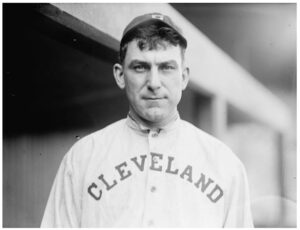
Nap Lajoie
After the 1900 season, Lajoie’s five-year contract expired. Lajoie was making the league maximum of $2,400 per year in addition to a $200 under-the-table yearly payment by Phillies owner Colonel John Rogers. Lajoie’s roommate was Ed Delahanty, the Phillies star outfielder. Delahanty was being paid $600.00 over the minimum, and when Lajoie learned of this, refused to sign with the Phillies for the 1901 season unless Rogers paid him $400 to make up the difference for the prior year. In steps the new American League, who had a team in Philadelphia, the Athletics, managed by the venerable Connie Mack. Mack learned of the trouble between Lajoie and Rogers and quickly offered Lajoie a 4-year-contract worth between $16,000 and $24,000. In February of 1901, Lajoie signed a contract with the A’s and became their starting second baseman.
Based on the reserve clause, Rogers immediately sought an injunction to bar Lajoie and two other players he lost to the American League from playing for the A’s. The court denied his request for an injunction, thus allowing the defectors to play in their new American League homes. In 1901, Lajoie had one of the best single seasons in baseball history. In addition to setting the still unbroken record for highest batting average in the American League, he led the Athletics in runs, hits, doubles, home runs and runs batted in. He won the Triple Crown and led the American League in 8 offensive categories.
Rogers appealed the lower court’s decision and the case was finally decided by the Pennsylvania Supreme Court in April of 1902, one day after opening day. The court sided with Rogers and granted the injunction. In doing so, it determined that the reserve clause was lawful and agreed that Lajoie was an irreplaceable player. The result of the injunction was that Lajoie was banned from playing baseball in Pennsylvania for any team other than the Phillies, who still had ownership of Lajoie’s services. As talented as Lajoie was, the Athletics couldn’t keep a player who was barred from playing home games. Therefore, Mack allowed Lajoie to negotiate with his good friend Charles Somers, owner the Cleveland Bronchos (aka Blues, later known as the Indians). Lajoie signed with Cleveland and played out the majority of his HOF career for them, save for a small caveat. Whenever the Bronchos came to Philly to play the Athletics, Rogers would ensure law enforcement was there to board the train in Philadelphia to serve Lajoie with citations for contempt. However, he was never caught. Each time, Lajoie would miss the games in Philly, staying in Atlantic City while his team played in Philadelphia, then rejoin the team immediately afterwards. That was a nutty outcome, in a very nutty case. Nutty is a highly complex legal term that you’ll have to look up on your own.
Despite their victory, the National League began to see the writing on the wall, and in 1903 the National League made a second National Agreement, this time with the American League. The rival National League and American League reached a truce whereby they agreed to respect each other’s reserve clauses. This meant that, yet again, the players had few other options for their services and few opportunities to challenge the reserve clause The agreement began a partnership between the two leagues that continued until they formally merged into a single organization in 2000. In addition to creating the World Series, the agreement provided for mutual respect of the reserve clause, avoiding litigation and ensuring that teams in both leagues would retain control over their players. As a result of this agreement between the two leagues, there was peace in the valley for about a decade.
Article interlude #2: The Dodgers will trade for Juan Soto and Shohei Ohtani in a seven team trade, that caused the trade simulator to blow up and will take an individual with a doctor’s degree in path to weeks two unravel. Players coming to the Dodgers will be Soto, Ohtani, Drury and Scott Barlow. Players leaving the Dodgers will be Bellinger, Muncy, Cartaya, Stone, Keith, Busch, Hoese, Ferguson, Bickford, Knack, Pages, Jose Ramos, and several 18 year old pitchers I’ve never heard of. James Outman is not going to be traded!!!
Back to the article: It would not be until 1914, when the Federal league emerged as a rival to the National and American leagues. The Federal League convinced 81 players from the American and National League teams to switch to their teams. Of those, 18 players left during their contract years, while the other 63 jumped clubs during the year covered by the reserve clause. The American and National Leagues decided to sue only the 18 players to leave during their contract years, to avoid judicial scrutiny of the reserve clauses. Yet again, the players won most of those legal challenges. Unfortunately, the victories were short lived, as the Federal League folded in 1915.
The first antitrust baseball case fully litigated on the merits was American League Baseball Club v. Chase, 149 N.Y.S. 6 (N.Y. Sup. Ct. 1914), a dispute involving Hal Chase, a star first baseman who moved from the Chicago White Sox of the American League to the Buffalo Buff-Feds of the Federal League. The White Sox sought to enjoin Chase from switching leagues.
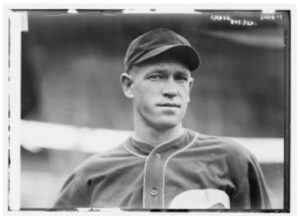
Hal Chase
In his defense, Chase argued that baseball violated federal antitrust laws. The Judge however, while agreeing that baseball was a monopoly, he decided that baseball was not involved in interstate trade or commerce. Instead, he concluded, “Baseball is an amusement, a sport, a game that . . . is not a commodity or an article of merchandise subject to the regulation of congress . . . .” Interestingly, the Court did rule that baseball had violated New York state law, meaning that the preliminary injunction initially granted could no longer be maintained. And its s reasoning suggested that the Court also would have found baseball to have violated federal antitrust laws had it affected interstate commerce:
“A court of equity insisting that ‘he who comes into equity must come with clean hands’ will not lend its aid to promote an unconscionable transaction of the character which the plaintiff is endeavoring to maintain and strengthen by its application for this injunction. The court will not assist in enforcing an agreement which is a part of a general plan having for its object the maintenance of a monopoly, interference with the personal liberty of a citizen and the control of his free right to labor wherever and for whom he pleases; and will not extend its aid to further the purposes and practices of an unlawful combination, by restraining the defendant from working for any one but the plaintiff.”
This decision was basically like kissing your sister, Chase was able to go on and have a great career, that is until he was part of the Black Sox scandal and banned from baseball for life. The owners on the other hand did not have to worry about having their “protections” stripped away.
The next great battle came, when the Federal League decided to take on the National and American Leagues in court. This will have to wait until the next article as this one has become far too long.
Final trade interlude: No matter what happens at the deadline with the Dodgers, if any of the star players are traded to other teams, it won’t take long for fans to moan that Andrew Friedman doesn’t even try; the Dodgers could have easily matched the trade made by the other teams and whoever we acquire will not be enough to take us to the promised land!
1 Baseball’s Reserve Clause and the “Antitrust Exemption”, Federal Judicial Center
2 James R. Devine, Baseball’s Labor Wars in Historical Context: The 1919 Chicago White Sox as a Case Study in Owner-Player Relations, 5 Marq. Sports L.J. 1, 46 (1994)
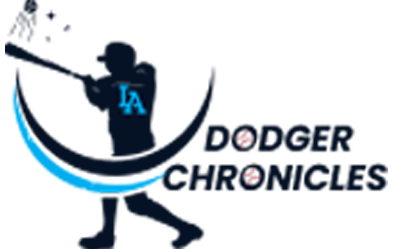
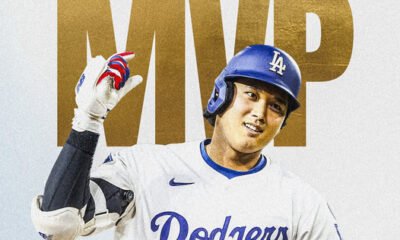

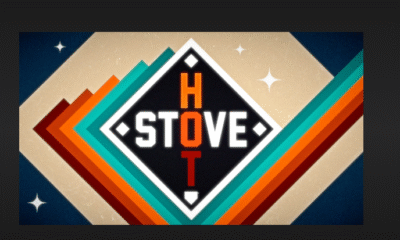

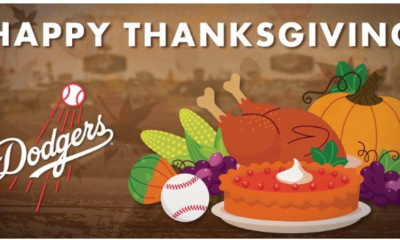







Wow, Great write up Rob.
Rob, this was fantastic. Thank you for doing this. MLB will always be an oligopoly that will control the sport. But do they need the antitrust exemption to keep others out? None of the NFL, NBA, NHL have anywhere close to the antitrust exemptions that MLB does and they have withstood other leagues popping up. How many football leagues have we seen come and go?
There are independent baseball leagues, but none possess the ability to compete with MLB, or MiLB, which MLB wants to control through the antitrust exemption. Right now there is a group, Advocates For Minor Leaguers, that is seeking legislation to eliminate the antitrust exemption for MiLB. It seems at the very least, this group could be successful at being able to unionize the MiLB players. Marvin Miller was successful at the MLB level. The more MLB tries to control MiLB players and organizations, the louder their voices will become. It is not like the NFL or NBA where players can come out of college and compete for a starting position. MLB billionaires will continue to throw enough money at MiLB to keep others out, but not enough for it to flourish. MLB is still the only game that will pay $8MM to high school kids to sign with them. What independent baseball team/league can afford that level of expense?
The best thing that could happen to MiLB is if the Independent Baseball Leagues would be able to sign some of the prospects and compete for talent and attendance. What would it be like if 100 Kumar Rockers decided to not sign with MLB teams, but instead signed with Indy Leagues. Maybe the draft drops to 10 rounds and MLB teams will have to go out and buy players in the Indy Leagues as they do with those in Foreign Leagues like Japan and Korea.
It is a complex issue that business people need to get in front of without grandstanding politicians. They will need the politicians for leverage, but not for the show.
Rumors are percolating that SD is looking to not only trade for Soto, but to expand the deal to include Josh Bell. 8.5 hours to go before this whirlwind is through. It will probably 9 to 9.5 before every trade is known. Not just Soto and Josh Bell.
Willson Contreras
Ian Happ
David Robertson
Mychal Givens
Noah Syndergaard
Joey Gallo
Miguel Andújar
Dominic Smith
Nathan Eovaldi
JDM
Tyler Mahle
Brandon Drury
Carlos Rodón
Wilmer Flores
Zach Plesac
Pablo López
Garrett Cooper
Martín Pérez
Chad Kuhl
José Iglesias
Scott Barlow
Michael A. Taylor
Matt Moore
Sean Murphy
Ramón Laureano
Nelson Cruz
Joe Mantiply
Christian Walker
Baltimore Orioles Bullpen
Miami Marlins Bullpen
Detroit Tigers Bullpen
Washington Nationals Bullpen
Of course not all of the above will be moved. There will be more Robbie Grossman, Chris Martin, and Garrett Cleavinger type trades.
There are bound to be surprises.
While some will be glued to Twitter, others will take a ho-hum attitude. One thing LAD fans should consider. They have made multiple high level deadline trade moves, and the only time they have won the WS in the last 34 years was when they did not acquire a MLB player…2020. The one trade was Ross Stripling for MiLB pitcher Kendall Williams.
I would not be surprised at all if the Dodgers did not do anything of significance, and I would not be surprised if they acquired Juan Soto or Pablo Lopez. AF is always unpredictable, unless there is a Manny Machado or Max Scherzer type need. There isn’t one this year.
Baltimore closer Jorge López goes to Twins:
LHP Cade Povich – Twins #22 – 22 year old in A+ League
RHP Yennier Canó – 28 year old with 13.2 MLB IP back in MiLB
RHP Juan Núñez – 21 year old in Rookie League – Not Top 30
LHP Juan Rojas – 18 year old in Rookie League – Not Top 30
Maybe Baltimore believes they got fleeced on the Manny Machado deal, but Lopez could absolutely helped LAD and they could have beaten the above. Thus Rob, I have made your prediction that we fans will say “the Dodgers could have easily matched the trade made by the other teams”, come to fruition. But they could have.
They have something else cooking.
Hopefully it will involve Pablo Lopez and Anthony Bass.
Rob, this was a page turner. Thank you.
Unions have been greatly needed and have made a big difference in the lives of Americans. I never wanted to join a union though and I don’t like business and union being adversaries.
Looks like Soto is going to San Diego as is Josh Bell. Going to Nats are CJ Abrams, Robert Hassell III, James Wood, Jarlin Susana.
Gore maybe going as well if Padres can unload Meyers or Hosmer contracts in the deal.
That is a ML SS who will move in right away (Abrams). #1 prospect OF Robert Hassell III, #3 prospect OF James Wood, and #14 prospect RHP Jarlin Susana (18 year old in Rookie ACL). Hassell III is considered one of those proverbial can’t miss prospects with multiple All Star potential. Wood is also highly regarded. I have not followed Susana at all, but for an 18 year old his numbers do look promising. They also get LHSP MacKenzie Gore which could be huge for Washington, and a salary saver in Eric Hosmer. The Nats did well on this one. Plus the Padres got the better hitter this year thrown in…Josh Bell. The Padres MiLB system is decimated. All they have left is Luis Campusano who cannot stick with the MLB team, and SS Jackson Merrill. Campusano is their lone Top 100 prospect (#52).
I am glad the Dodgers stayed away from this one. The Dodgers shut down Soto in the last series. They get another chance this weekend. But the Pads will be formidable at playoffs.
Soto will be available again in 2025. He is not a 23 year old asset until he is signed for 10 plus years otherwise he might as well be 29.
Seems like a lot of talent for a .246 hitter that isn’t likely to stay there.
I agree. Soto seems to love the limelight. I love San Diego, but it is not a haven for sports teams or sports heroes. That team is missing a whole lot of chemistry. With attention hogs like Machado, Tatis, Jr., and now Soto. I wonder how that team will mesh. Even Trent Grisham pops off too much for a nobody.
There is a little wrinkle in this one. Hosmer has a no-trade clause and Washington is one of the teams he has blocked. He has not signed off. Hosmer is going to get a payday out of this as well.
I wonder which team will wind up paying him that bonus.
You know Boras will be in the middle of the negotiations, pushing the envelope way north for whoever pays. He is after all, Soto’s, Hosmer’s, and Bell’s agent.
Looks like a win-win for both teams.
There’s a lot going on today and before I forget I want to thank Rob for this morning’s read. I know a lot of work went into that, and it’s a complicated topic to sort out. Baseball has always operated under its own unique, independent set of laws and I’ve never really figured it out. Thanks for your work in helping to clear it up.
Absolutely agree with Badger. Wonderful article, Rob. Thank you.
I was having really mixed feelings about a potential Dodger trade for Soto, but I realized that I really didn’t want it to happen when my first reaction to the news was relief.
I wonder if we’ll ever find out what Andrew’s best offer was.
Were the Nats insisting on May or Lux? That would have been enough to kill it right there, as I don’t think Friedman would have dealt either of them.
I’d still like to see us get a good reliever (Bautista from the O’s, Jiminez from the Tigers, etc.). I’m not ready to count on Kimbrel in October and, as I’ve said many times, Treinen’s best use is high leverage, not closing.
Wouldn’t be shocked to see us wind up with a couple of guys off Jeff’s list above. Wouldn’t be surprised to see nothing…………well that would surprise me a little.
RF Betts 2022, Outman, Pages, Pederson 2023
SS Trea 2022, Lux 2023….
1B Freeman 2022……
C Smith 2022, 2023, Cartaya 2024…….
3B Justin 2022, Drury 2023, Smith 2024
2B Lux 2022, Betts 2023, 2024…..
CF Bellinger 2022, 2023, Somebody obtained in a trade or FA
LF Taylor 2022, Somebody else 2023….
DH Muncy/Drury 2022, Vargas/Busch 2022
I would try to trade Rios for Drury.
While AF works his magic to get Joc for Bums, I will be enjoying the Dentist. Carry on, but all trades still need my approval. 😀
Would you approve a trade of your dentist for Fred’s Bumtologist?
Gotta admit, that Padres lineup looks scary.
Gallo for Beeter?
Because you can’t have enough three true outcome players???!??!!?!??
This trade absolutely makes ZERO sense. The Dodgers already have Joey Gallo and his name is Max Muncy. This pretty much ends Edwin Ríos’ year with the Dodgers. They do not need yet another LH bat. I hope NYY is paying his salary.
I have to believe that Ríos will be on the move somewhere. LH power bat is exactly what Miami is looking for.
After the All Star Game I was going to write that the Dodgers think they are soooooo gifted at fixing players, they are going to trade for Patrick Corbin and Joey Gallo. But even I could not fathom them making those moves. It is not the loss of Beeter, but couldn’t Beeter have been more of a headliner for Jorge López. He is a better prospect than Cade Povich, the headliner Minnesota gave up?
Maybe Gallo is the lefty bat going to Miami and not Rios.
Miami doesn’t want Joey Gallo. Rios would be going home to Miami. Gallo is a LV kid.
Dodgers trade for Josh Reddick. Oops, I meant Joey Gallo
If there is any doubt that Dodgers look for Three True Outcome bats, check out how Joey Gallo depicts himself when in an interview with NJ Advance Media’s Randy Miller:
“Coming here, I knew it was going to be really tough. It took a while for people to understand the player I am in Texas. Early on, I was the No. 1 prospect, but I struck out a lot. I was a strange player. But Rangers fans started to understand, ‘OK, this guy strikes out, but he hits homers, he plays good defense, he’s a good person.’ Rangers fans came to understand that. Here in New York, if you don’t get enough hits, it doesn’t matter what else you’re doing. They’re going to tear you apart. I’ve been a Three True Outcomes player my whole life. It’s not like I hit .300 my whole life. I’ve been a .200 hitter my whole life and I hit .160 here. So I knew New York was going to be a tough time and a tough place to play, especially the player that I am.”
And it appears that the pitchers book on him is well known.
https://twitter.com/lindseyadler/status/1538253162850697218?ref_src=twsrc%5Etfw%7Ctwcamp%5Etweetembed%7Ctwterm%5E1538253162850697218%7Ctwgr%5E2c9872d97a3aa5a0af592fbc0c2c72fa7017805c%7Ctwcon%5Es1_c10&ref_url=https%3A%2F%2Fbleacherreport.com%2Farticles%2F10041596-yankees-reportedly-trade-joey-gallo-to-dodgers-for-clayton-beeter
I do not care who the hitting coaches are. They are not going to change who Joey Gallo is, and apparently the Dodgers are fine with that. And about those hitting gurus, they sure have not “fixed” Max Muncy or Cody Bellinger.
Muncy’s and Bellinger’s issues are more injury related, no?
Not that I can make any sense out of the Gallo move.
I do not believe they are injury related. Both players say their hitting problems are not injury related. Muncy is adamant about that. How long do we wait on Belli’s injury to heal? It’s been almost 2 years now since his shoulder issue.
I am waiting to hear how AF/BG spin the Gallo trade.
I mean the spin pretty much writes itself,no?
If I were Friedman I would simply say:
we are 12 games up
We have the best record in baseball
We have one of the top farm systems in baseball
We’ve done that without large and small contributions from:
trienen, Heaney, May, Kershaw, Graderol, Muncy, Belli.
the team has faith they can work with Gallo and that the change of scenery will help.
that said, I don’t get the Gallo deal at all. But Friedman’s much smarter than I and more accomplished in this field.
Aaaaaaaand:
Friedman in his PC:
“I feel good about the team that we have in place and the way that they’ve performed for us. If we had an acute need, you’d see us be more on tilt and things where it’s less of an acute need, it’s more about talent and how it fits short term, long term. There’s just a different process that goes into that. I feel good about how aggressive we were in trying to line up on different things.”
Repeatedly referred to the trade deadline as the “most expensive time of year” to acquire players.
“We have a really special dynamic in that room right now and it was something we were cognizant of as we navigated this deadline.”
on Joey Gallo: “Our hitting guys are as good as it gets, so we feel there is a really compelling upside story.”
“I think our pitching staff is really good and will most likely get considerably better. So we’ll figure out through August and September what that looks like. I feel really confident we’ll have a very, very good 13-man pitching staff in October.”
Andrew Friedman cited the coming 40-man roster crush (May, Duffy, Buehler, Kahnle, Treinen, Gonzalez) as a reason for trading Mitch White. He went on to say the Dodgers have “a lot of pitchers” who could come up this season or next year.
Friedman obviously believes in this team.
Guess I will too.
It looks like the Phillies have traded their #3 prospect (MLB #86) 22 year old catcher Logan O’Hoppe, to LAA for CF Brandon Marsh. Seems like a stiff price to pay, but Philly needed a CF, and Marsh is more than capable.
Then they traded their #26 prospect, 22 year old RHP Ben Brown, for RHRP David Robertson. That’s okay the Dodgers get an extra year for the homer happy Chris Martin. You would think that Zach McKinstry would have been a better option that Brown, and yet the Dodgers ended up with the lesser reliever.
The Twins steal Jorge López from Baltimore, and then get Tyler Mahle from Cincinnati.
#7 Prospect – 24 year old 2B/3B in AA – Spencer Steer
#18 Prospect – 21 year old LHP in Rookie League – Steven Hajjar
Non Top 30 – 22 year old 3B/1B in AA – Christian Encarnacion
It doesn’t appear to be to big of a hurdle if the Dodgers wanted to do this.
Drury to the Padres.
The Padres are so much fun. It’s good for baseball.
Yeah, Bums is going to be bummed.
I guess they couldn’t pull off the Muncy for Drury trade. At least they got Gallo with accent on least.
Beeter-Gallo Trade Analysis:
Clayton Beeter had his moments, but he always walked too many batters.
He was sent to Tulsa this year, but baseball people didn’t know if he’d be able to cope with Tulsa’s rabid fans and the always-tough Tulsa press corps.
As it turns out, Tulsa was just too much for him so the Dodgers, having a lot of other pitchers decided they had to trade him. The market was very tepid; however, at last the Yankees agreed to give them a throw-away player in exchange for the failing Beeter.
Dodgers sending Jake Lamb to Seattle for cash. I guess they just can’t wait to get Gallo’s K Bat into the lineup. There has to be something else coming…right?
We’ve just sold Lamb to the Mariners.
So, in effect, we’ve traded Beeter and Lamb for Gallo, who is having a worse year than either one of them.
As I said above, there has to be something else coming,..right?
Feinsand says maybe another run at Lopez.
Others say they’ve been done for a while.
Marlins said Lopez is staying.
Mitch White to Blue Jays – For MiLB pitchers, like they need them more than Mitch White this year. Probably another Kendall Williams.
Nope, not even close. Not only do they trade away a decent #6 SP – Long reliever, at the MLB level in Mitch White, but they also traded their #19 prospect 3B Alex De Jesus to Toronto. In return they get 23 year old RHP, Nick Frasso and 20 year old LHP Moises Brito. Frasso is a 23 year old in A+, while Brito is a 20 year old still in DSL. Neither are top 30 prospects for Toronto. So the Dodgers lose their #19 prospect who is playing well at A+ at 20 years old. He is 3.5 months older than the return player who is still in DSL.
Not even close to what?
To the Ross Stripling for Kendall Williams trade in 2020. At least Williams was considered a prospect at the time.
Oh. I just think it makes sense.
Not thinking about the Stripling deal. Don’t think the situation is very comparable. Wasn’t that done, in part, because Stripling wanted to start and the team fondly wanted to facilitate that.
I kinda saw this coming.
Just too many “near majors” level pitchers. Need to get value for them before the value dissipates.
This makes way more sense to me than the Gallo deal.
What value???? They basically gave away White and De Jesus for 2 low level non prospect lottery picks. Why not keep De Jesus and move 25 year old Kody Hoese, or has his value already dissipated?
Jeff, remember your July 30th headline: In Andrew Friedman I Trust.
Has he lost your trust so quickly or are you just frustrated, like some of us, that he didn’t do more?
I won’t speak for Jeff, Fred.
But going by his words, he may be looking to have Friedman institutionalized.
Not institutionalized. I am frustrated. I saw the Padres, NYY, Houston, and others go for it. Especially the Padres. It is not about the 162 game schedule, it is the playoffs. I still believe in AF, I just do not understand what they did, except to get rid of 40 man roster spots. But then they add one back by picking up Joey Gallo. They still have Jake Reed, Reyes Moronta, Eddy Alvarez on the 40 man.
Sarcasm?
I mean obviously people who know more than you or I think they are higher than “non-prospect lottery picks”
Vargas supposedly being added to the taxi squad.
Well, I was wrong.
Molly Knight sums it up nicely for me:
They must be super confident in Dustin May’s return, and maybe even Buehler. I have concerns about Heaney’s durability and Gonsolin regressing but nobody asked me. Could have used relief too.
Yeah, I guess. They’ve gotten this far with a lot of injuries and 2 stars hitting like they’ve never seen Major League pitching before, so yes, they’re counting on players who aren’t currently here and other key players to continue doing what they’ve never done. Hope they’re right.
I’m with Bluto on the Frasso deal, Jeff. Nobody seems to have any info on the second guy but what I’m seeing about Frasso looks very interesting.
Dodgers are sending him to Great Lakes and although he may be a bit old for that league he’s already gone through TJ which would have certainly slowed up his movement through the minors.
I think between the fact that they were running out of times they could option White this year and the fact that they probably feel that May will replace his role, they did him the favor of sending him where he’d get more opportunity.
They’re going to have a real roster crunch this winter with the Rule 5 so that may explain the DeJesus part of the trade.
I also think they did Lamb a favor by sending him to his hometown (Seattle).
I’m amazed that so many GM’s still trade with that flim-flam man Preller.
Miguel Vargas has been added to the 40 man. That is one domino. Joey Gallo has been assigned to MiLB for now.
I thought Roberts said Gallo would report tomorrow.
For real? He has options remaining?
Turns out we went to the dentist with you this afternoon. It was like having teeth pulled to watch Preller pull move after move to improve his team.
Not only did they not get another starter, the guy who was giving the staff the support it needed was sent packing – with no replacement. That means Gonsolin, Anderson and Urias will be asked to keep taking the ball through August/September. May might be back soon, but to ask him for quality starts right away is very risky. I assumed he would be given some bullpen innings this year and come back ready next Spring. Got that wrong too. Buehler? Who knows. I’ve been waiting to hear he will be having surgery. Pepiot? Miller? Grove?
I still think the team will need starting pitching or we will have dead arms – again.
R.I.P. Vin.